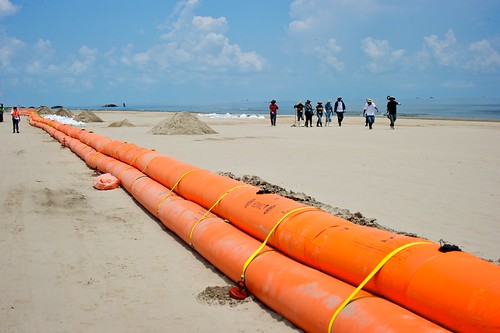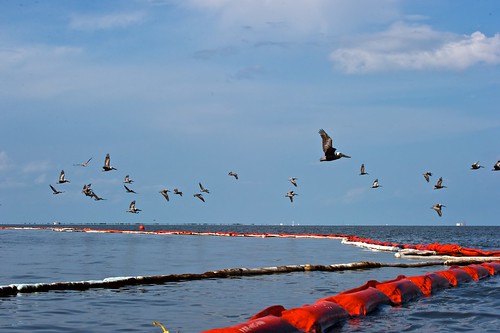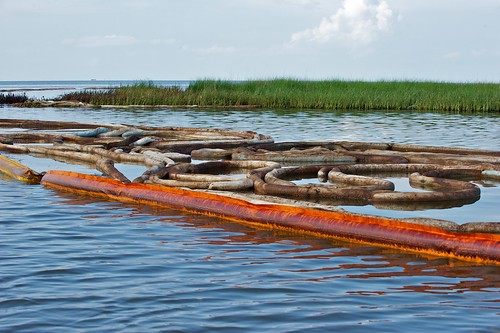Should it Be a Felony to Cover the Oil Spill?
Reposted from TEDxOilSpill Expedition member James Duncan Davidson’s blog:
The Coast Guard has set up newer and tighter restrictions in the Gulf. Ones that would have prevented the TEDxOilSpill Expedition team from getting some of the photos we took. In short, there’s a 65-foot “safety zone” around any response vessels or booms on the water or on beaches. As reported by the Times-Picayune, violation can result in a civil penalty of up to $40,000 and could be prosecuted as a Class D felony.
Safety zones sound all good and fine if you’re nowhere near the disaster. But they also squelch coverage. Let me show you what the beach on Grand Isle looked like when we went out one evening after all the security and clean up crews left for the night:
Those dark blobs are tar balls. Weathered oil. Here’s what that same beach looks like a few days later during the day on the “safe” side of the barriers preventing access:
Can you tell what’s down at the water line? Maybe there’s something there. Maybe there’s not. What a difference that distance makes. This restriction is nothing but yet another chilling effect on top of all the others that are in place. Press photographers know how to work in dangerous situations. They know to not interfere with workers doing their job. They’ve done that in numerous disasters over the years of all kinds. They also know how to take responsibility for their actions.
Volunteers can’t work on the beach, ostensibly for liability reasons. Only contracted employees can go work. Of course, those contracts expressly forbid talking with media. Every boat captain that signs on with the clean up is also expressly forbidden from talking to media or taking photographers out, even when those photographers can stay out of the way of people working. Chilling effects, all.
The Coast Guard says that you must call the Coast Guard captain of the port of New Orleans to get permission. If you buy the safety argument, that sounds sort of reasonable. Except for the fact that there’s no stated rules for who can get permission. The Times-Picayune article reports that AP photographer Gerald Herbert—one of the few mainstream press photographers that has been putting out incredible shots—has asked to discuss the new policy with officials. Guess what? He hasn’t received a response.
Here’s one of my photographs that I could be convicted as a felon for taking now:
Here’s another:
Here’s another:
I successfully made these photos without endangering any response workers, interfering with boom, or endangering wildlife. In fact, there wasn’t a response worker within miles of my location. Should I be a felon for making these images?
Why is the government helping control the message here? Who’s interest is being served? It’s certainly not the public’s interest.




